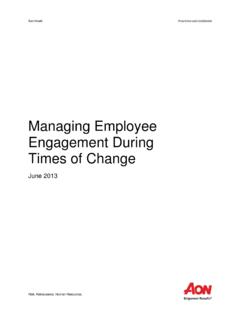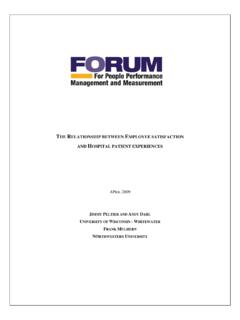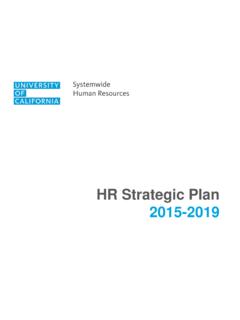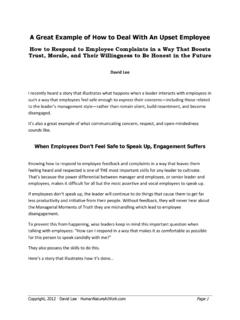Transcription of 2017 Media and Entertainment People Strategy …
1 2017 Media and Entertainment People Strategy Survey Report2017 Media and Entertainment People Strategy Survey Report2 ContentsIntroduction 4 Industry overview 4 Executive summary 4 Approach 5 Human resources Strategy 6 Market overview 6 Human resources strategic priorities 7 Human resources operating expense 7 Business transformation 8 Business transformation initiatives 8 Role of human resources in business transformation 9 Human resources capabilities to support business transformation 10 Human resources technology 12 Human resources technologies 12 Employee digital experience 13 Data analytics 15 Payroll operations 16 Talent management 18 Talent management challenges 18 Talent priorities 19 Learning and development capabilities 20 Cybersecurity 21 Rewards and bene ts 24 Current-state perquisite and planned updates 24 Employee engagement and work/life balance programs 25 Global mobility 26 Infrastructure and policy 26 Short-term business travelers 27 Conclusion 29 Appendix 30 Demographic information 30 Methodology 31 Ernst & Young LLP contact information 313 Welcome to the 2017 Media and Entertainment People Strategy Report, a deep dive into the challenges that Media and Entertainment (M&E)
2 Companies face now and anticipate in the future as they seek to attract, develop and retain talent. The survey of HR professionals seeks to understand how companies are adapting their People strategies to respond to emerging trends and looks at the capabilities HR needs to support business transformation in a rapidly changing M&E overviewThe Media and Entertainment (M&E) industry includes the following verticals: Advertising and measurement Broadcasting, cable networks and online video Cable and satellite operators and multichannel video programming distributors (MVPDs) Film, TV, online gaming and music Sports, theme parks and live events Publishing and information servicesThe M&E industry is undergoing major change at the global level. EY has seen at least three megatrends:1. Technology is transforming the entire M&E ecosystem. New technologies such as augmented reality (AR)/virtual reality (VR) and arti cial intelligence (AI) have potential to create new consumer experiences and revenue streams.
3 Data is used to complement creativity to delight and engage consumers with tailored experiences, and to drive innovative advertising solutions. Operational technology such as robotic process automation (RPA) and blockchain have the potential to vastly reduce costs and improve productivity. 2. Creativity, distribution and monetization have shifted from a rigid linear framework to a highly fragmented, customized model. Demand for content continues to grow, but mass markets are giving way to niche content, personalized services and highly targeted brand messaging. Consumers are increasingly channel-agnostic, focusing less on time and place and more on value, exibility and the overall experience (including content discovery). Data unlocks the promise of new products and go-to-market frameworks across Monetization models come under pressure. As consumers increasingly value access to content over ownership, M&E companies are re-evaluating offer bundling, pricing strategies and, more broadly, business models.
4 Ad-based revenue models face challenges from newly empowered consumers who can skip ads or block them (or simply don t interact with traditional ad-supported Media ), forcing M&E companies and ad agencies to innovate the advertising experience. These industry trends provide many challenges and opportunities for M&E companies. To remain competitive in the marketplace, many companies are rede ning their business Strategy as well as their People summaryThe Media and Entertainment industry has speci c People Strategy needs due to the unique nature of People the industry recruits, hires, develops and pays. This, coupled with accelerating trends in management, is rede ning the Media and Entertainment world. In response, companies are adapting their strategies to make employee experiences more consistent with consumer experiences. To attract, develop and retain the right talent, many M&E companies are starting to think of their employees as internal customers.
5 The purpose of the 2017 Media and Entertainment People Strategy Survey is to understand how M&E businesses are adjusting their People Strategy in response to current industry trends. The survey responses highlighted the following:1. Globalization. More than half of participants predicted that global expansion will be one of the primary drivers for a stronger bottom line. However, less than one-third of participating companies have been effectively responding to globalization. Globalization will have many implications for Human Resources (HR), including challenges such as expanding HR processes globally. Introduction42017 Media and Entertainment People Strategy Survey Report2. Digitization. While survey participants seem to be responding well to the external challenges around digitization, there seem to be many areas to further develop when it comes to internal employee digital experience.
6 Better employee digital experiences and HR technologies can not only facilitate more ef cient work execution, but also help the company create and retain a more engaged Data analytics. As we move into the age of big data, survey participants described their current ability to capture meaningful HR data and make use of it in decision-making. The type of HR data companies typically collect is more traditional and they are not generally equipped to conduct predictive analysis based off Employee engagement. Consistent with other industries1, employee engagement is among the top challenges for HR leaders, especially in an environment of uncertainty. M&E companies are now also competing with other sectors and industries that have been creatively disrupting the M&E talent landscape for top talent. This has made it even more challenging to retain top talent and create an engaged Mobility.
7 The majority of the companies surveyed indicated they do not have a formal mobility program. Among the ones who do, their mobility Strategy is not aligned with talent Strategy . More than half of the companies also indicated that they had not been tracking tax triggers for their short-term travelers, which can have regulatory implications as the companies continue to conducted the 2017 Media and Entertainment People Strategy Survey in early 2017 using an online survey delivery platform targeting chief human resources of cers (54%), human resources executives (38%) and other HR leadership roles (8%). The survey includes responses from 14 participants. Not all questions were mandatory, therefore some questions may have been skipped by the participants. The views may not fully represent the collective whole that were petitioned and further data collection and discussions will be highly of the survey data is presented in aggregate throughout this report to maintain con dentiality of proprietary information.
8 Some answers were multiple choice so not all charts equal 100%. This survey allows EY to build a foundation through which hypotheses of trends in the industry can be further developed and explored in a future US oil and gas People Strategy survey, EYGM Limited, 20175 Human resources strategyTo achieve success in business transformation, M&E companies need to place additional focus on culture to address the human components of transformation. This means aligning the company s People Strategy with business transformation objectives. In order to do this, there needs to be increasingly close collaboration between the human resources function and business functions. When the HR department plays a strategic partner role within the company, positive results are expected for the company s bottom line and business transformation initiatives. Based on the section on business transformation of the M&E People Strategy Survey, for those companies who did not think they had been effective in driving needed business transformation, their HR department has historically played only a minimal or tactical role in transformation.
9 Market overviewHuman resources leaders had a very positive outlook on the M&E industry, with 85% of participating companies believing the economics of the industry would remain the same or improve in the coming years, despite the disruptions and challenges M&E companies currently face. In terms of driving revenue growth, HR leaders predicted that new digital products and services (85%) and global expansion (62%) would be their top revenue drivers, followed by new pricing and bundling strategies (38%) as well as enhanced customer experiences (31%).Top revenue drivers85%62%1 New digital products and servicesTo t a l ( % )4 Enhanced customer experiences3 New pricing and bundling strategies2 Global expansion38%31%Among those companies who identi ed new digital products and services as one of their top revenue drivers, 73% believed their company was effectively responding to digitization.
10 In contrast, among those who identi ed global expansion as one of their top revenue drivers, only 38% of them believed their companies have been effectively responding to globalization. One survey participant noted that expanding the HR process globally has been one of their biggest is notable that new pricing strategies as well as enhanced customer experience are ranked lower on the list. As a response to the current megatrends in the industry, it appears many M&E companies are readjusting their strategies to focus on more innovative pricing strategies and ways to provide better customer experience. To support any successful business Strategy change, it is critical that the company is equipped with effective business transformation capabilities, including the capability to support the People side of ranked digitalization asa top revenue driver73% out of these respondentsthink they are effectivelyresponding to digitalizationGlobal expansion62% ranked global expansionas a top revenue driver38% of these respondents thinkthey are effectively responding to global expansion62017 Media and Entertainment People Strategy Survey ReportLow priorities0%9%1 Pay parityTo t a l ( % )
















